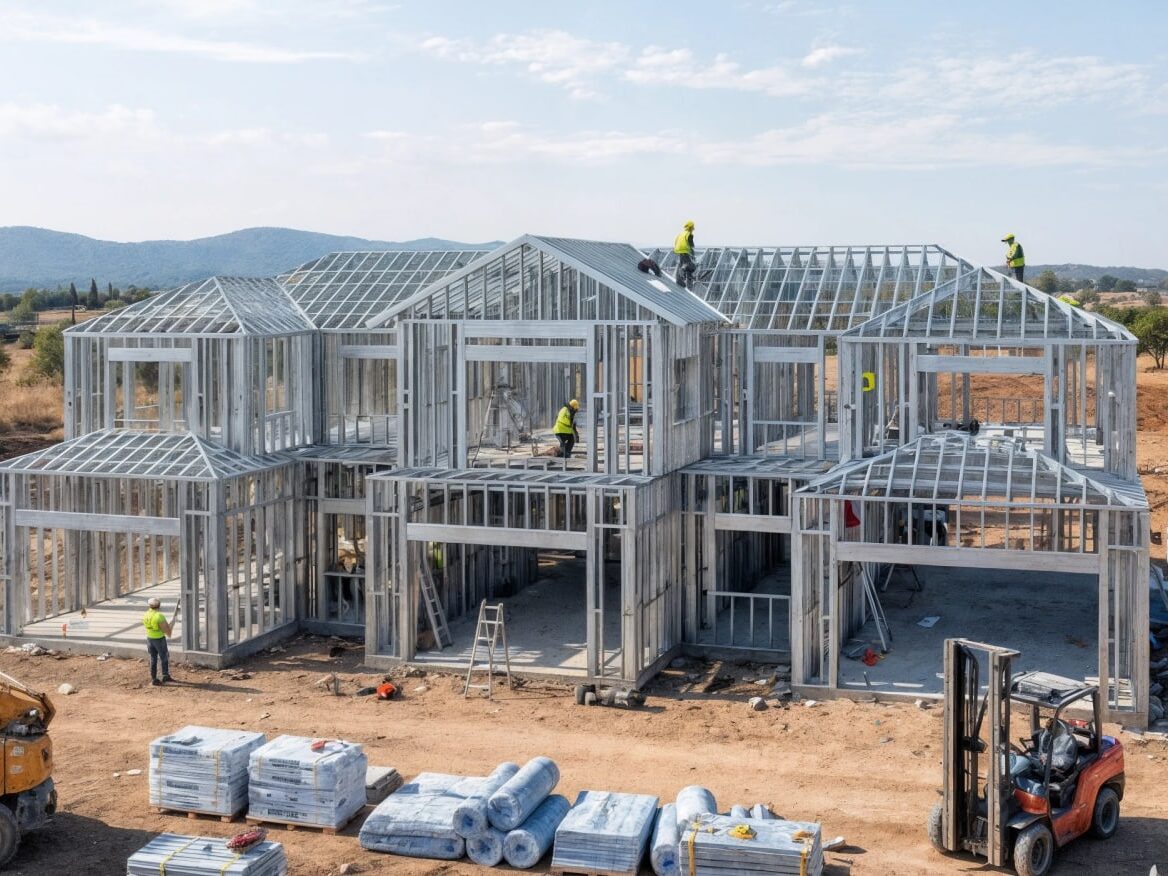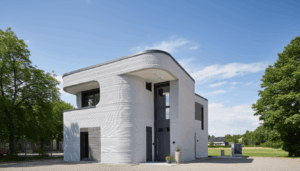LSF system: The dream of building a custom villa often battles vision with reality. The vision is one of architectural beauty, personalized spaces, and a place to call home. However, the reality can be a long, unpredictable process. It is often filled with delays, budget overruns, and the uncertainties of traditional construction. Fortunately, a modern method can align reality more closely with the dream. This is the promise of Light Steel Framing (LSF). By transforming construction into a precise process, LSF provides unmatched predictability and control. This guide walks you through the LSF system for building a villa, step by step. Ultimately, we will show how modern engineering creates a better path to your dream home.
Step 1: The Digital Blueprint – Design and Engineering
First, every successfulLSF system project begins not with a shovel, but with software. This initial phase is the most critical because it lays the digital foundation for the structure. In this step, a structural engineer translates the architect’s vision into a detailed 3D model. Using advanced BIM or CAD software, the engineer designs and details every component of the villa’s frame. This is more than a general layout. Instead, it is a comprehensive plan with the exact position of every stud, joist, and truss. Furthermore, the model incorporates pathways for mechanical, electrical, and plumbing (MEP) services. These pre-punched service holes eliminate haphazard on-site drilling, which is a key LSF feature. Consequently, this meticulous planning ensures every part fits together perfectly and resolves conflicts early.
Step 2: The Factory Floor – Precision Manufacturing
After the team approves the design, they send the digital files directly to the factory. This is where off-site manufacturing begins. Inside the factory, machines feed high-tensile, galvanized steel coils into a roll-former. Guided by the digital files, the machine precisely cuts, shapes, and punches each component. Next, workers label each piece with a unique code for its location in the structure. In many cases, the team then assembles these components into larger, easy-to-handle panels. For example, they build wall sections, floor cassettes, and roof trusses in a controlled environment. As a result, this process ensures higher quality control, using skilled workers and specialized equipment.

Step 3: The Groundwork – Site Preparation and Foundation
While the factory manufactures the villa’s frame, work can proceed on the building site. This parallel workflow is a key reason for LSF’s speed. First, the construction crew excavates the site. Then, they install essential underground utilities for water, sewage, and power. Following this, they construct the foundation. As we’ve learned, LSF is very lightweight. Therefore, the villa does not need the massive foundations of a typical concrete structure. A simple concrete slab or strip footing is often sufficient, saving significant time and materials.
Step 4: The Main Event – On-Site Assembly
When the foundation is ready, the most dramatic phase begins. The prefabricated panels and steel members arrive on-site like a high-tech kit. Immediately, a small, skilled crew begins the assembly process. Using detailed drawings, the team erects the structure with incredible speed. First, they lift wall panels into place and secure them to the foundation. Next, they connect the panels to each other with screws and bolts. They then lay the floor joists and add the next level of walls. Finally, they crane the roof trusses into position. Because the factory manufactured every component with precision, no on-site modifications are needed. Consequently, the entire superstructure of a villa often comes together in just a few days.
Step 5: Finishing Touches – Cladding, Services, and Interiors
Once the steel skeleton is complete, the team brings the villa to life. The process from this point is faster thanks to the frame’s accuracy.
- Exterior Finishes: First, workers wrap the frame with sheathing and a weather-resistant barrier. Then, they apply the desired exterior cladding, such as stucco, brick, or siding. They also complete the roof with the chosen material.
- Services Installation: Electricians and plumbers have a straightforward task. They simply run wires and pipes through the pre-punched holes in the studs. This eliminates the need for costly and time-consuming drilling.
- Interior Finishes: Next, the team places insulation into the wall cavities for thermal performance. Afterward, they attach drywall directly to the steel studs. Finally, workers complete the flooring, cabinetry, painting, and fixtures.

Conclusion
The LSF system process transforms villa construction into a science of precision. It replaces the guesswork of on-site work with the certainty of digital design. As a result, the construction journey is faster and more cost-effective. Ultimately, this modern method produces a higher-quality home and makes the dream of a custom villa an accessible reality.







